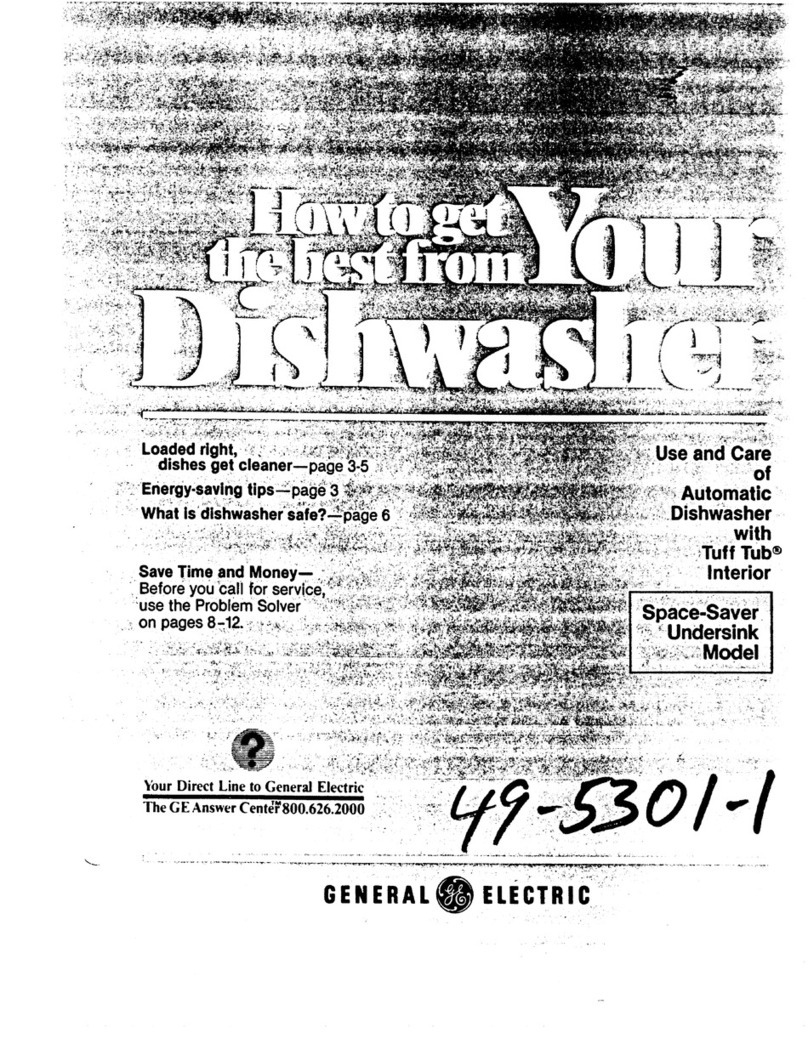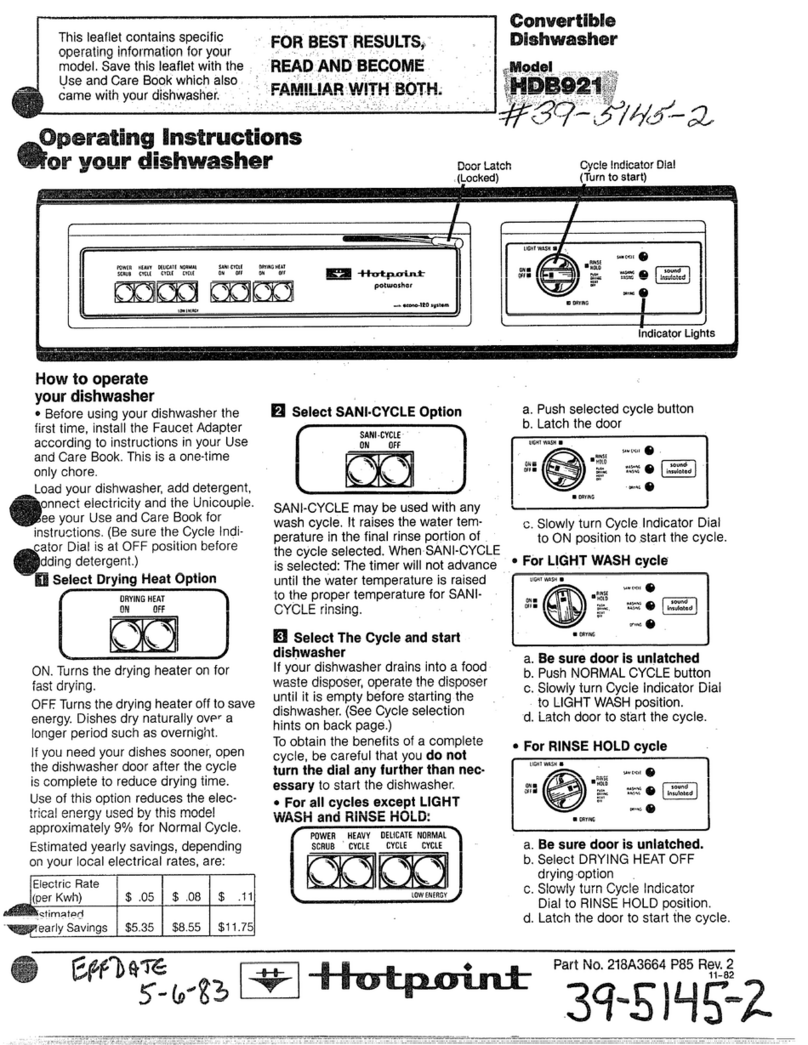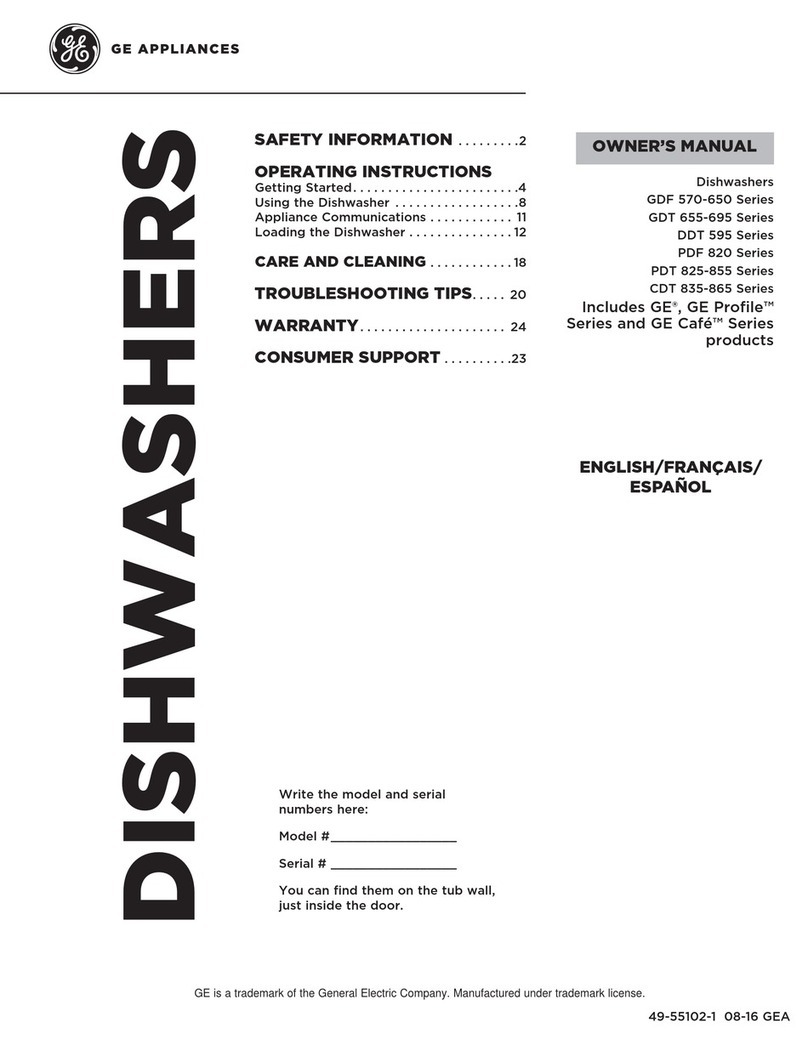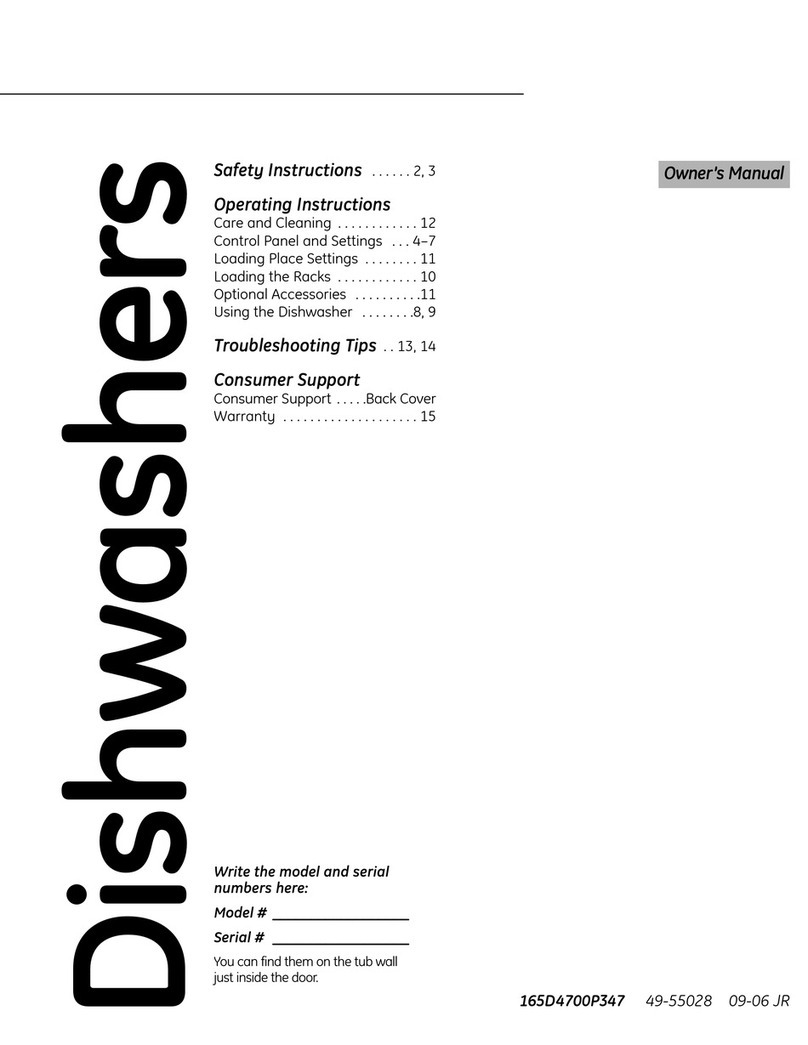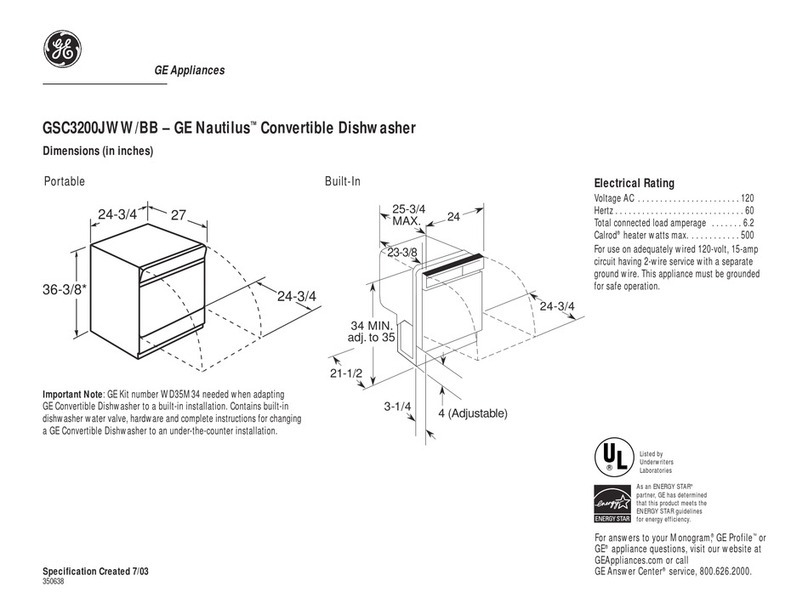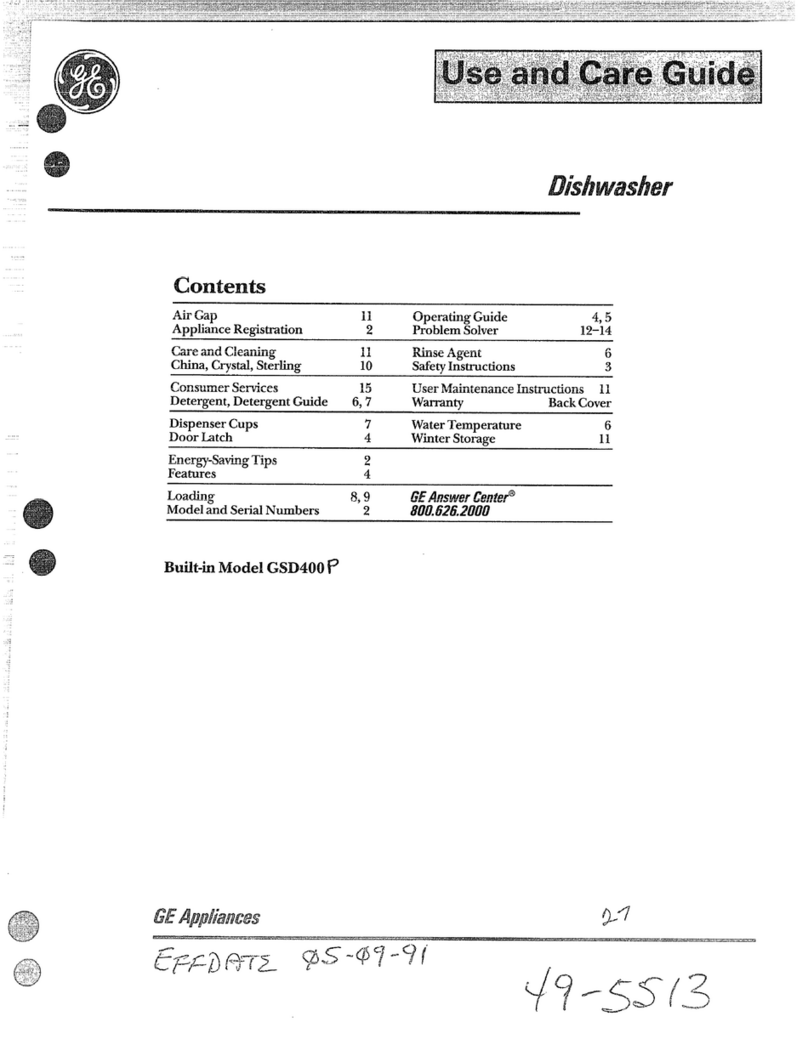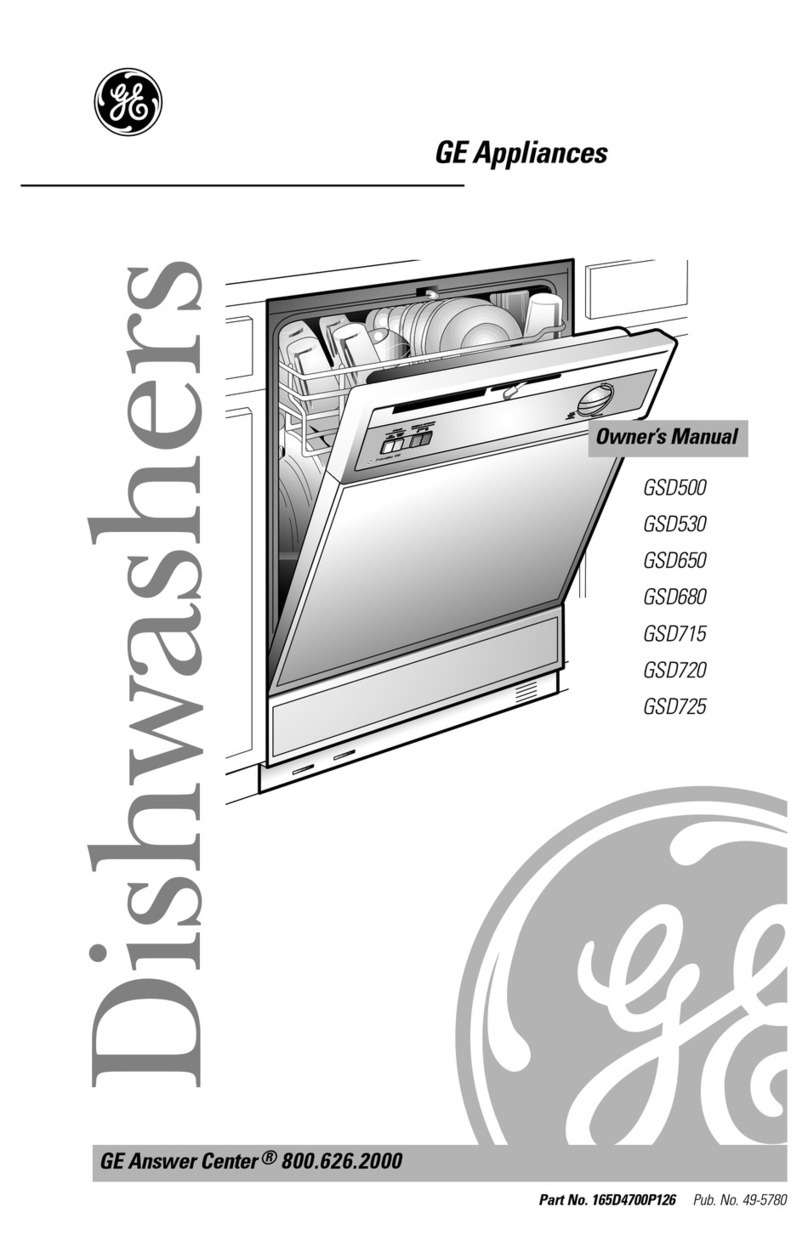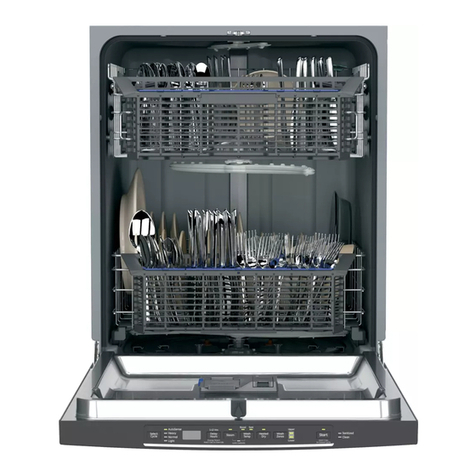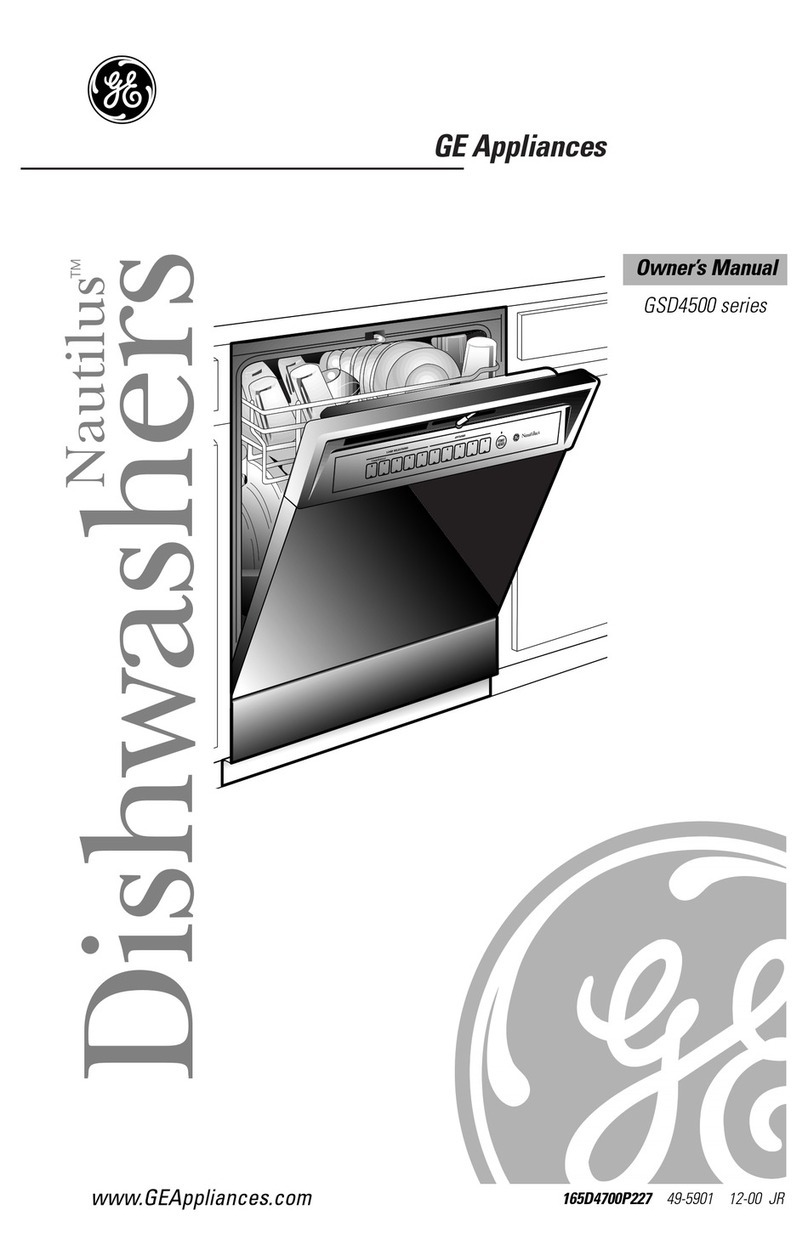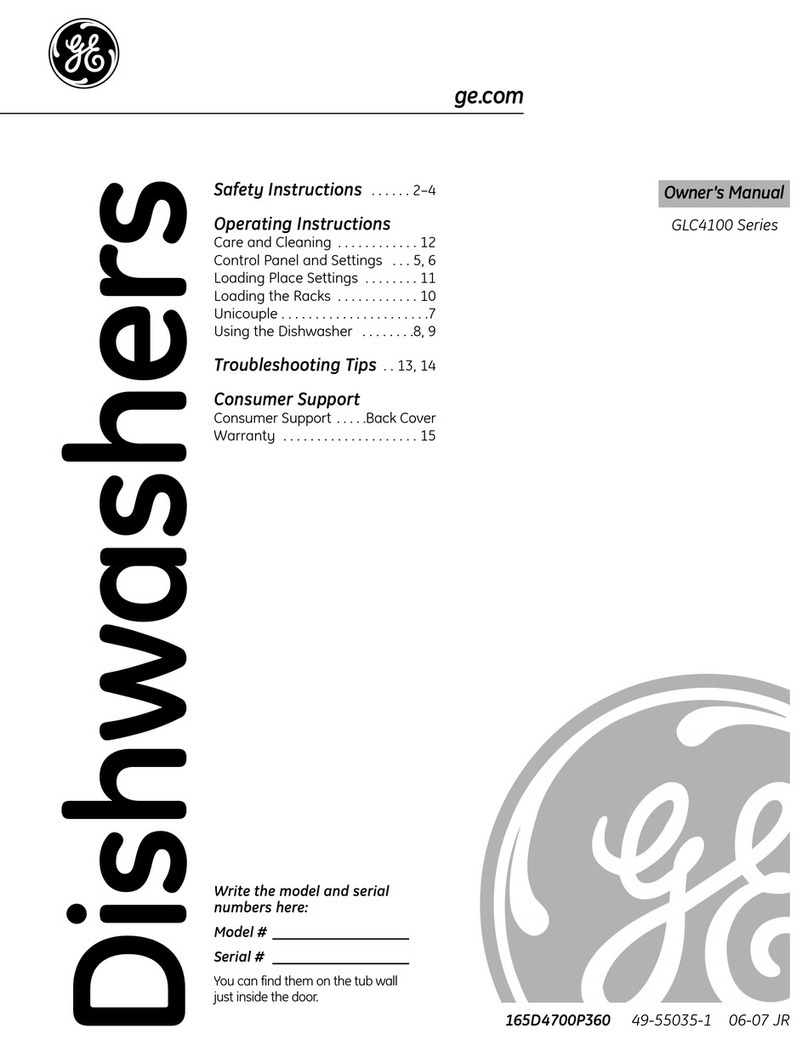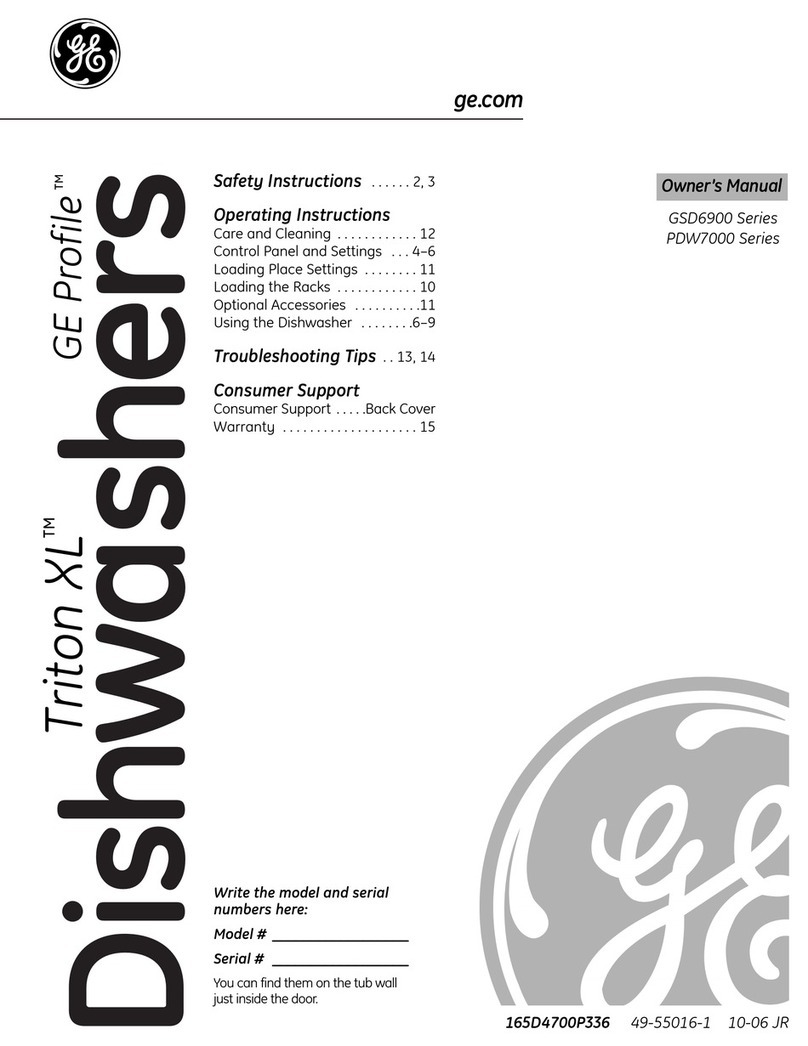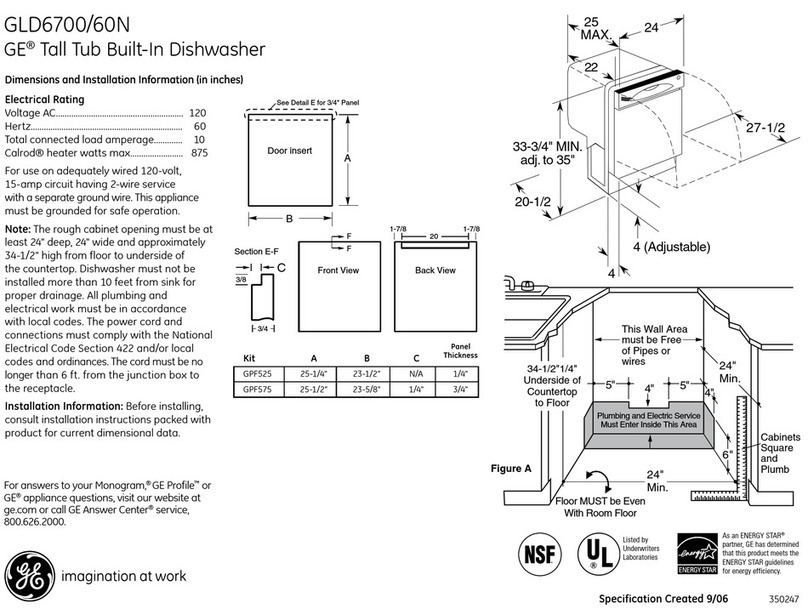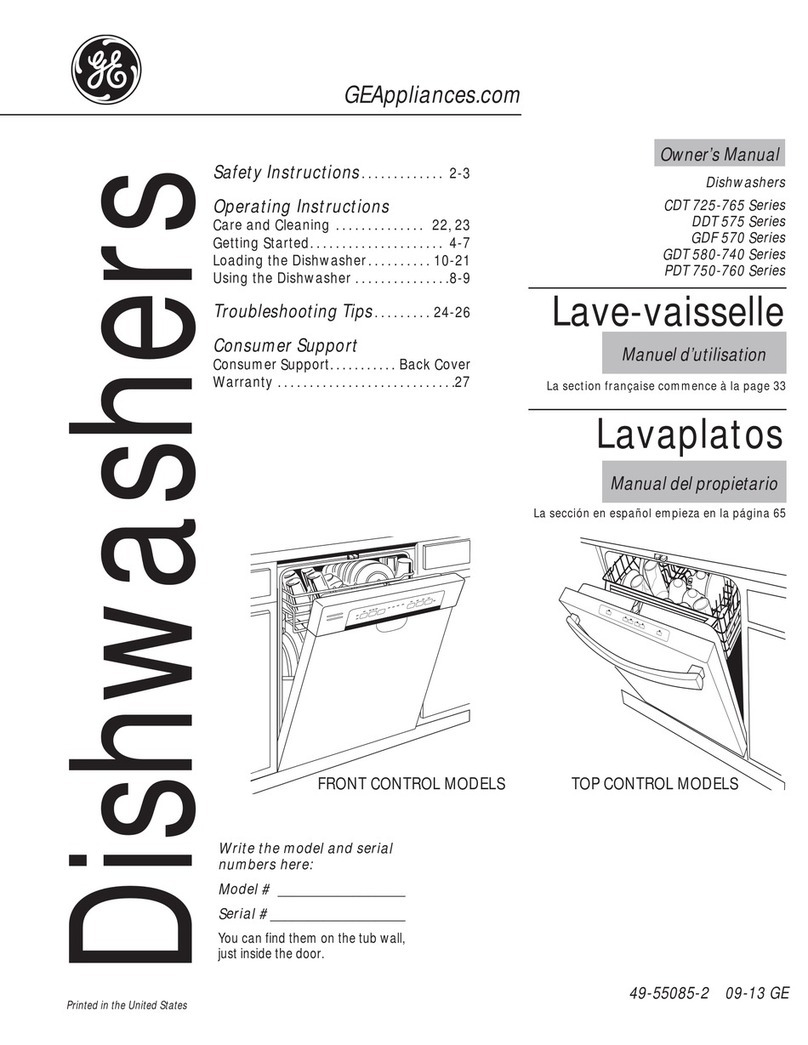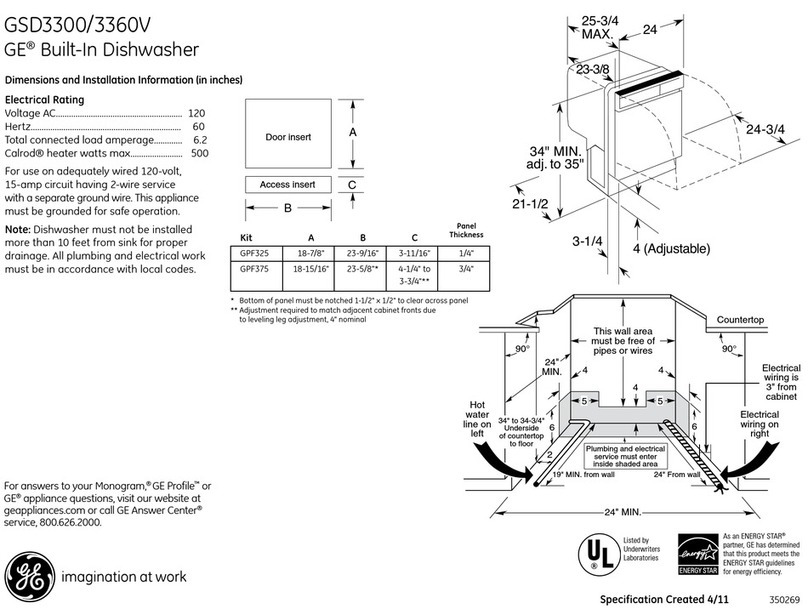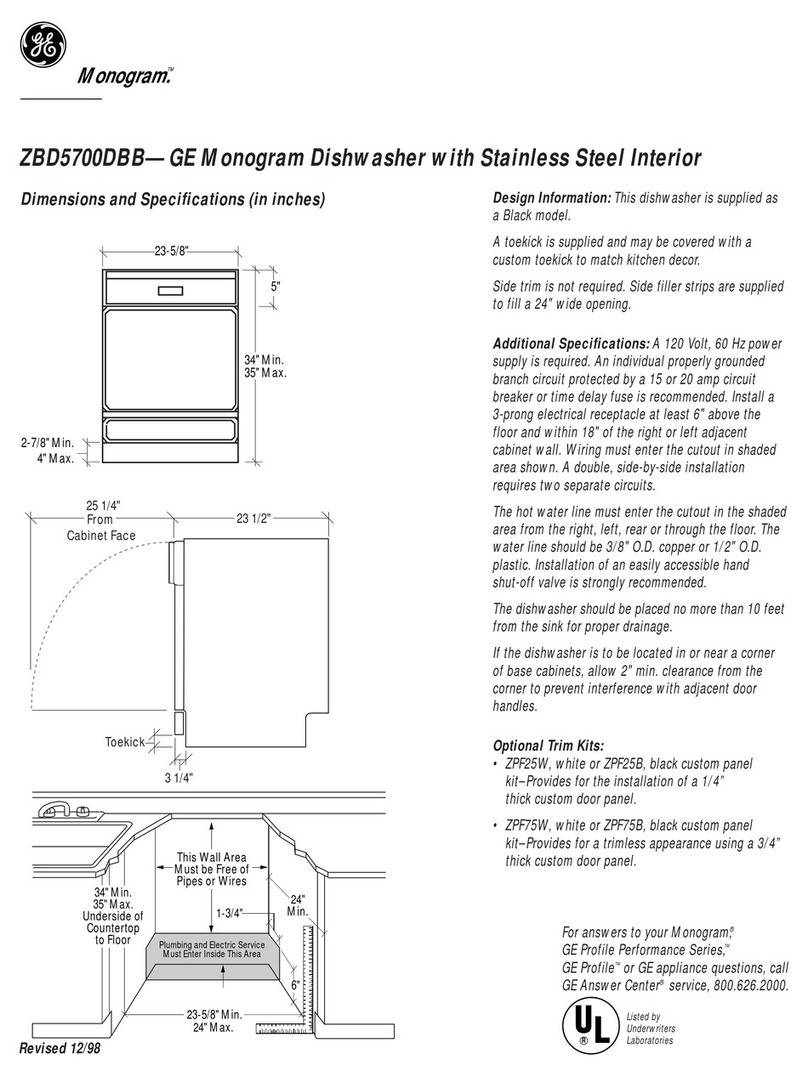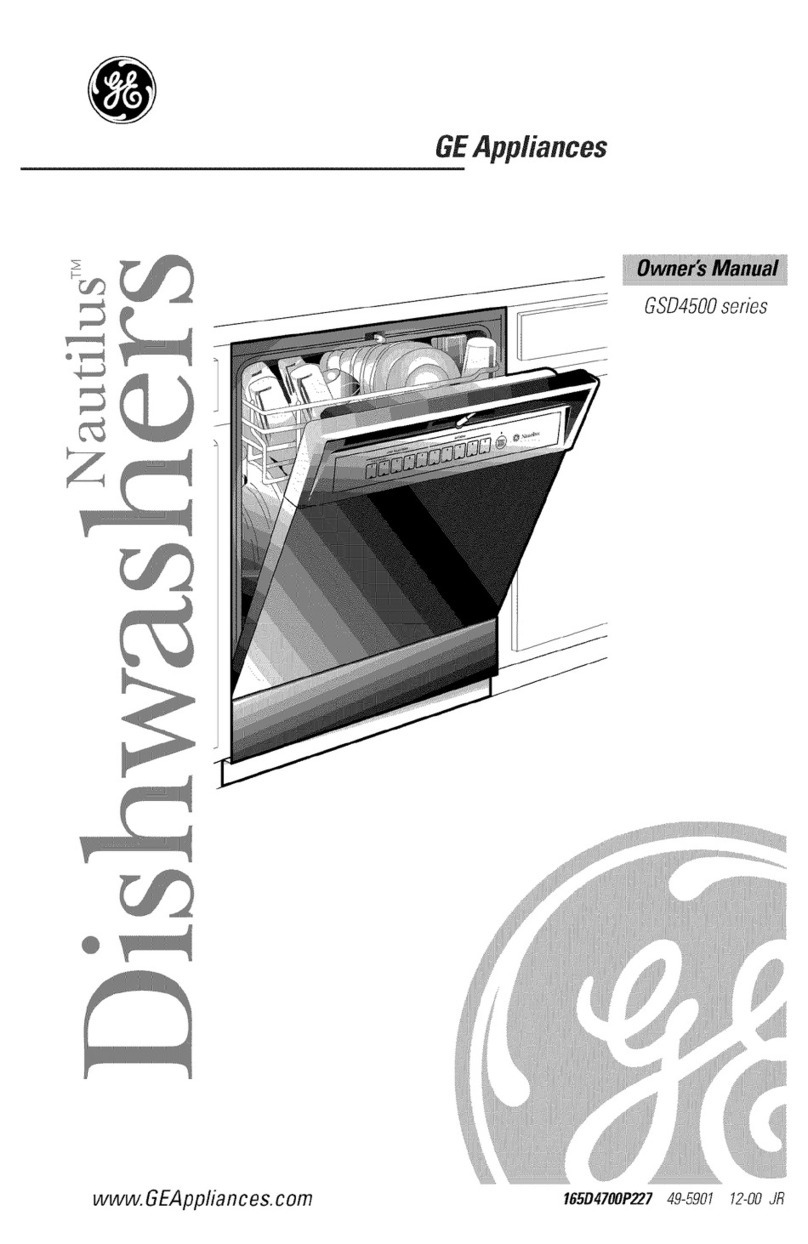10
Operating Instructions Safety InstructionsConsumer Support roubleshooting ips
Loading the dishwasher racks.
Lower Rack
The lo er rack is best used for plates, saucers
and cook are. Large items such as broiler
pans and baking racks should go along the
left-hand side. Load platters, pots and bo ls
along the sides, in corners or in the back. The
soiled side of items should face the center of
the rack. If necessary, oversized glasses and
mugs can be placed in the lo er rack to
maximize loading flexibility.
Also, be careful not to let a portion of an item
such as a pot or dish handle extend through
the bottom rack. This could block the ash
arm and cause poor ashing results.
Fold-do n tines (on some models) provide
flexibility for extra-large and hard-to-fit items.
The tines may be left in the up position or
folded do n to customize the lo er rack.
Silverware Basket
A variety of options is available regarding
the three-piece silver are basket in your
dish asher. The complete basket is designed
to fit on the right side of the lo er rack.
Additionally, each end of the basket is
removable to add loading flexibility to
accommodate flat are and lo er rack
capacity needs.
To load flat are, simply push the adjustable
handle to either side. Put flat are in the
basket ith knife handles up to protect
your hands. Place spoons in the basket
ith handles do n. Mix knives, forks and
spoons so they don’t nest together.
The provided lids ith slots can be used
to avoid nesting of silver are. Small plastic
items, such as measuring spoons and
lids for small containers, should go in
the bottom of the silver are basket ith
silver are on top.
The lids of both end and middle baskets can
be closed to contain small items. Long items
can be placed on the utility shelf in the
upper rack.
Don’t let any
item extend
through bottom.
To remove end baskets, grasp the
basket at opposite corners and
slide apart.
For best dishwashing results, follow these loading guidelines. Features and appearance of racks and silverware
baskets may vary from your model.
Upper Rack
Although the upper rack is primarily for
glasses, cups and saucers, pots and pans can
be placed in this rack for effective cleaning.
Cups and glasses fit best along the sides. This
is also a secure place for dish asher-safe
plastics.
The upper rack is adjustable (on some models)
to add flexibility in loading your dish asher.
To lo er, push tabs in and lo er rack. To raise,
just pull up on rack until it snaps.
The utility shelf (on some models) may be
placed in the up or do n position to add
flexibility. wine glass holder (on some
models) secures ine glasses for best
ashability. Because ine glasses come
in various sizes, after loading, slo ly push
in the rack to make sure they ill clear
the top of the dish asher.
Some models have an Angled Rack System,
hich allo s you to angle your dishes, such
as coffee mugs, for better cleaning and
quicker drying. To position the tines, pull the
lever for ard, drop the tines into position
and release the lever.
The upper rack is good for all kinds of
odd-shaped utensils. Saucepans, mixing
bo ls and other items should be placed face
do n. Fold-do n tines (on some models)
provide flexibility for extra-large and hard-to-
fit items.
Secure larger dish asher-safe plastics over
2 tines hen possible.
Make sure small plastic items are secure so
they can’t fall onto the heater.
Be sure that items do not protrude through
the bottom of the rack and block rotation of
the middle spray arm. This could result in
poor ash performance for items in the
upper rack.
Check to make sure that no items ill block
rotation of the ash arms.
